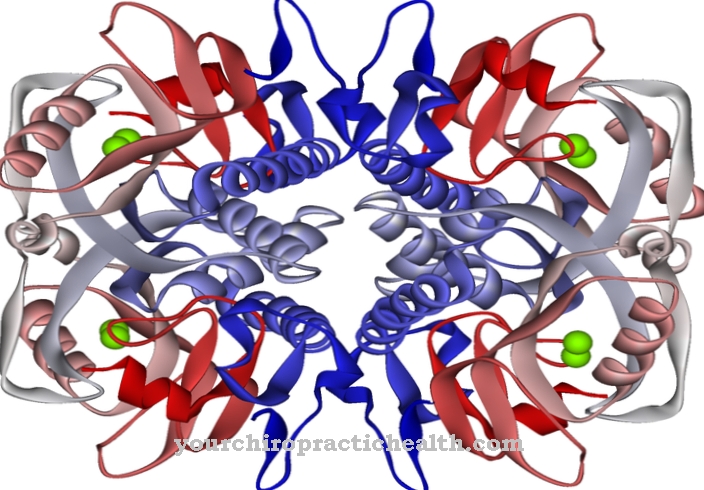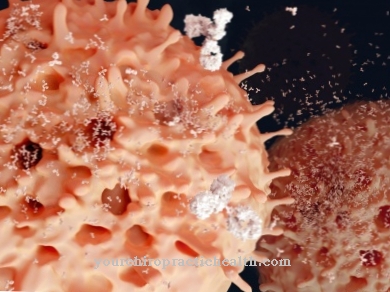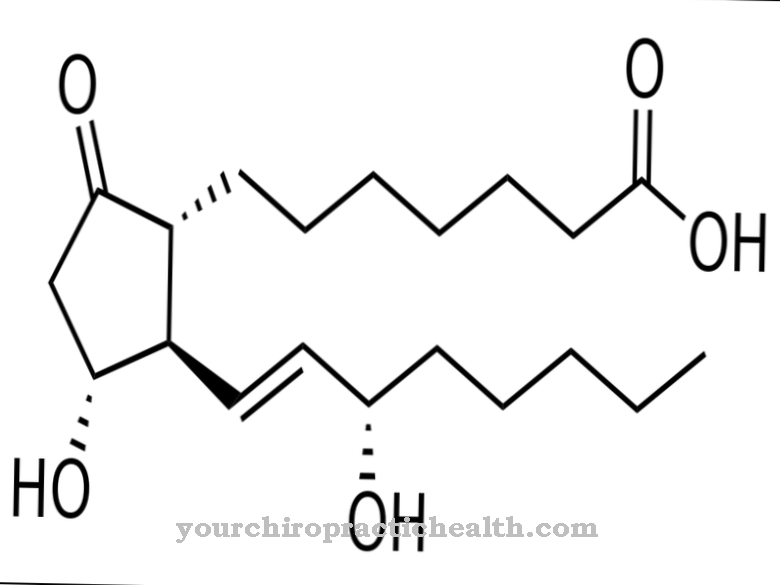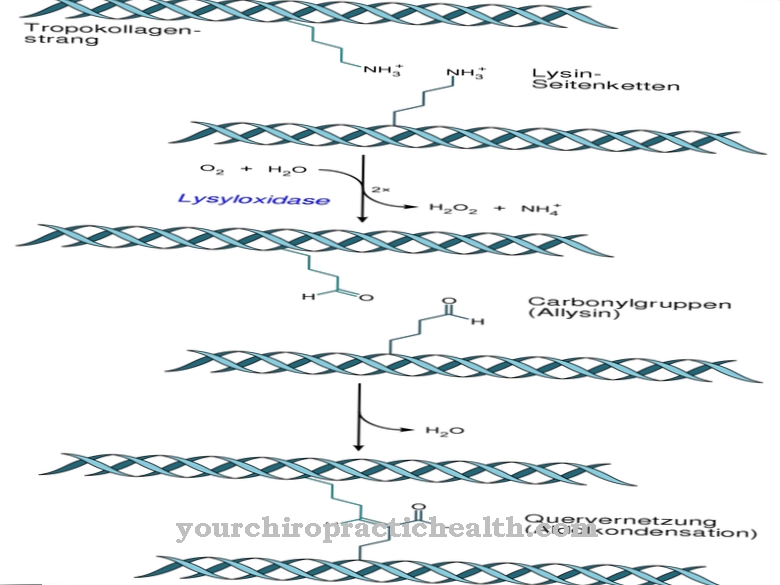Mineralocorticoids are hormones that belong to the corticosteroids. The hormones play an important role in regulating blood pressure and the sodium / potassium balance.
What are mineralocorticoids?
Mineralocorticoids are steroid hormones from the adrenal gland. Steroid hormones are steroids with hormonal effects. Steroids belong to the lipid class. Lipids are molecules that have lipophilic groups and are usually insoluble in water.
The best known and most important steroid for the human body is cholesterol. All lipoproteins and steroid hormones are made up of cholesterol. In general, mineralocorticoids belong to the corticosteroids. It is a group of 50 steroid hormones that are produced in the adrenal cortex (adrenal cortex). All corticosteroids have a basic structure that is built up from the hormone progesterone. Corticosteroids can be divided into three groups based on their biological effects.
The main representative of the mineralocorticoids is aldosterone, which is formed in the zona glomerulosa of the adrenal cortex. In their chemical structure, mineralocorticoids are similar to glucocorticoids, which also belong to the corticosteroids. However, mineralocorticoids mainly affect the water and mineral balance and not the energy metabolism.
Function, effect & tasks
The most important mineralocorticoid is aldosterone. It works in the connecting tubules and in the collecting ducts of the kidneys. There the hormone binds to the mineralocorticoid receptors (MR) and activates them.
Through activation, aldosterone ensures that more sodium channels (ENaC) and sodium transporters for the Na + and K + -ATPase are built into the plasma membrane. This allows sodium to be transported more easily across the epithelium. This results in an increased reabsorption of water. In addition, there is an increased excretion of protons, potassium ions and ammonium ions. All in all, aldosterone ensures an increase in extracellular volume. The concentration of potassium in the blood decreases and the pH increases. Aldosterone has a 1000 times higher effect on the mineral balance than the glucocorticoid cortisol.
Aldosterone is regulated by the renin-angiotensin-aldosterone system. When the pressure receptors in the kidney vessels measure blood pressure that is too low, the hormone renin is released. Through several transformations, angiotensin is finally created, which stimulates the release of aldosterone. The increase in the potassium concentration in the blood serum, the so-called hyperkalemia, can also activate the synthesis of aldosterone. Furthermore, the synthesis of aldosterone is stimulated by ACTH (adrenocorticotropic hormone). Dopamine inhibits the biosynthesis of the mineralocorticoids.
Education, occurrence, properties & optimal values
The mineralocorticoids are formed in the adrenal cortex. The adrenal cortex consists of three layers. Aldosterone and the other mineralocorticoids are produced in the zona glomerulosa, the outermost layer of the adrenal cortex. The starting substance is cholesterol. The hormone pregnenolone is formed from this via intermediate stages. Pregnenolone is a derivative of the pregnane.
It is the precursor to the hormone progesterone. At positions 21β, 18β and 11β, 18-hydroxycorticosterone is formed for the production of aldosterone by hydroxylation. An oxidation then takes place, during which the hydroxyl group on the C18 atom creates the aldosterone. Mineralocorticoids occur in different concentrations in the human body. The normal level of aldosterone in the blood plasma is 20 to 150 ng / l.
Diseases & Disorders
With adrenal insufficiency and shock, the aldosterone level can be reduced. Primary adrenal insufficiency is also known as Addison's disease. Addison's disease is caused, for example, by autoimmunological processes in which antibodies are directed against the hormone-producing cells of the adrenal gland.
The storage disease amyloidosis or an infarction in the context of Waterhouse-Friderichsen syndrome can also cause primary adrenal insufficiency. The lack of aldosterone leads to sodium loss via the kidneys. This triggers a hunger for salty foods in those affected. The lack of aldosterone imbalances the mineral and water balance. The blood pressure drops sharply, so that the patients suffer from circulatory problems. In the worst case, the cycle fails completely and those affected lose consciousness.
Disease states that are associated with an increased release of aldosterone are also referred to as hyperaldosteronism. A distinction can be made between primary and secondary hyperaldosteronism. The primary hyperaldosteronism is known as Conn syndrome. The cause is an autonomous overproduction of aldosterone in the adrenal cortex. In most cases, an adenoma in the adrenal cavity is responsible for the overproduction of aldosterone. Typical symptoms of primary hyperaldosteronism are high blood pressure, potassium deficiency in the blood serum and metabolic alkalosis. The patients suffer from headaches, fatigue, increased thirst and muscle weakness.
In many cases, there is also an increased excretion of protein in the urine and a reduced ability of the kidneys to concentrate. The amount of urine is increased. The secondary hyperaldosteronism is caused by a pathologically increased stimulation of the renin-angiotensin-aldosterone system. Such pathological stimulation can occur in chronic kidney diseases, which are accompanied by restricted blood flow to the kidneys. These include diseases such as renal artery stenosis, nephrosclerosis, and chronic glomerulonephritis.
Due to the restricted kidney blood flow, more angiotensin II is reactively formed, so that the RAAS cascade leads to an increased release of aldosterone. Diseases that are associated with a reduced circulating blood volume also activate the RAAS. Thus, liver cirrhosis and heart failure can also lead to secondary hyperaldosteronism. Diarrhea, vomiting and the use of laxatives can also lead to electrolyte changes and thus to increased activity of the RAAS. Secondary aldosteronism is also associated with the classic triad of hypertension, hypokalemia and metabolic alkalosis.




























